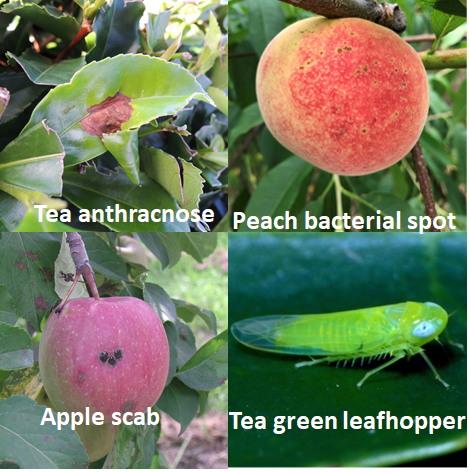Japanese tree fruits are well-known for their high quality in size, appearance, sugar content, and flavor. Japanese green tea is also well-regarded for its superb flavor and abundant beneficial natural components. On the other hand, Japan's hot and humid climate promotes the occurrence of a wide variety of pests, making it difficult to produce fruit and tea stably without intensive pest control. The proliferation of newly detected pests also poses a threat to fruit and tea production.
In an attempt to increase exports of Japan's high-quality fruits and tea, meeting phytosanitary requirements is essential. They must also satisfy the importing country's maximum residue limits for pesticides. Along with the aims of maintaining a sustainable environment and achieving the United Nations Sustainable Development Goals (SDGs), there are growing demands to reduce the use of chemical pesticides.
Our division has developed a series of technologies and methods for controlling pest insects and plant diseases to protect fruit trees and tea shrubs, thereby contributing to the goal of reducing pesticide use in agricultural production. We are also developing (1) plant sanitation technology such as disinfection methods for export-bound agricultural products, and (2) methods for non-chemical management of intractable pests such as pesticide-resistant strains or soil-borne pathogens through the effective use of natural enemies and emerging technologies of physical pest control.
Another goal of our division is to validate and update current systems of integrated pest management (IPM) for fruit and tea cultivation according to industrial demand for environmentally friendly pest control frameworks.





